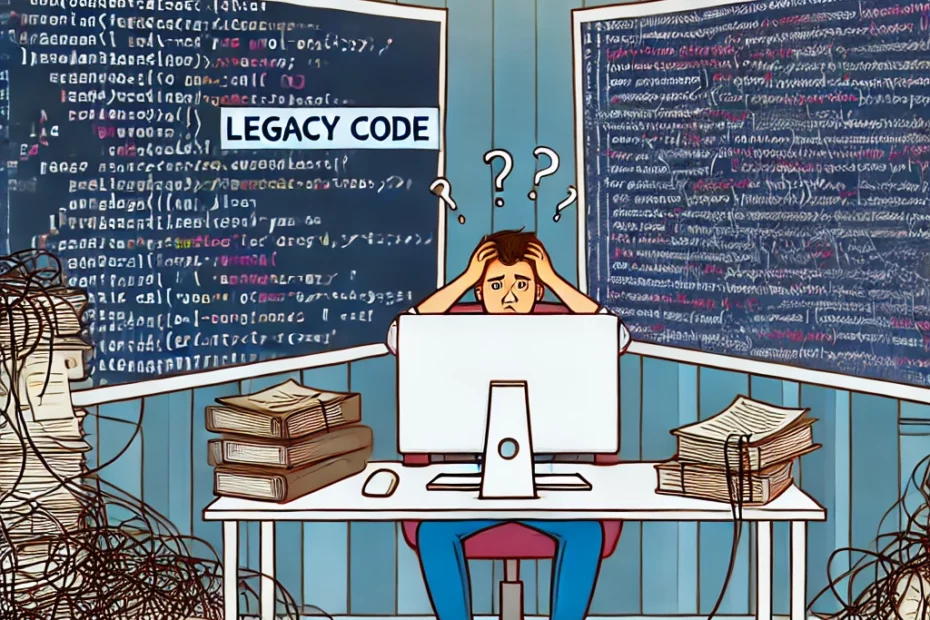In the dynamic world of software development, where new technologies and methodologies emerge rapidly, one challenge remains constant: dealing with legacy code. Legacy code, often defined as outdated or inherited code that lacks proper documentation or is difficult to maintain, can be both a burden and a necessity. Whether you’re maintaining an old system or integrating new features into an existing application, understanding how to navigate the complexities of legacy code is essential for developers.
challenges of legacy code is a complex but vital part of Enozom’s software development services. By employing strategies such as incremental refactoring, enhancing documentation, and introducing automated testing, Enozom helps clients maintain and improve their legacy systems.
What is Legacy Code?
Legacy code refers to any piece of software that is inherited from previous developers or that has been in use for a long time. Typically, this code is written in older programming languages or frameworks and often lacks modern practices like automated testing or clear documentation. While the term “legacy” might carry a negative connotation, it’s important to recognize that this code often powers critical business processes and applications that are still in use today.
The Challenges of Legacy Code
1. Lack of Documentation:
One of the most significant challenges with legacy code is the lack of documentation. Without clear documentation, understanding the purpose, functionality, and dependencies of the code can be incredibly difficult. This absence often leads to longer onboarding times for new developers and increases the risk of introducing bugs when changes are made.
2. Technical Debt:
Legacy systems are often plagued by technical debt, which refers to the accumulation of suboptimal code decisions over time. This debt can manifest as inefficient algorithms, outdated libraries, or convoluted code structures that make maintenance and upgrades more difficult. The longer technical debt goes unaddressed, the more challenging it becomes to manage and resolve.
3. Difficulty in Testing: Many legacy systems were developed without automated testing frameworks, making it challenging to ensure that changes do not introduce new bugs. The absence of tests also makes refactoring risky, as developers cannot easily verify that the system’s functionality remains intact after modifications.
4. Integration with Modern Technologies:
As businesses evolve, there is often a need to integrate legacy systems with modern technologies, such as cloud platforms, APIs, or new databases. This integration can be complex due to differences in programming languages, data formats, and communication protocols. Ensuring seamless interoperability between old and new systems requires careful planning and execution.
5. Resistance to Change:
Organizations may be hesitant to modify or replace legacy systems due to the fear of disrupting business operations. This resistance can lead to stagnation, where systems remain unchanged despite being inefficient or costly to maintain. Additionally, developers may be reluctant to work with legacy code due to its complexity and the perceived lack of innovation.
Strategies for Managing Legacy Code
1. Refactoring Incrementally:
Refactoring legacy code is essential to improve its structure, readability, and maintainability. However, attempting to refactor an entire system at once is risky and often impractical. Instead, adopt an incremental approach, where small, manageable sections of code are refactored over time. This strategy allows developers to gradually improve the codebase while minimizing the risk of introducing new issues.
2. Implementing Automated Testing:
Introducing automated tests is crucial for ensuring the stability of legacy systems. Start by writing tests for the most critical parts of the system, focusing on areas that are frequently modified or prone to bugs. Over time, expand test coverage to include more of the codebase. Automated tests provide a safety net that allows developers to refactor and modify code with confidence.
3. Enhancing Documentation:
Improving documentation is a vital step in making legacy code more accessible to developers. Begin by documenting the overall architecture and key components of the system. As you work on different parts of the code, add comments and explanations to clarify the logic and purpose of the code. Consider creating a knowledge base or wiki where team members can share insights and best practices for working with the legacy system.
4. Prioritizing Technical Debt Reduction:
Addressing technical debt should be a priority when working with legacy code. Identify areas of the codebase that are particularly problematic and allocate time and resources to refactor or replace them. Reducing technical debt not only improves the system’s performance and reliability but also makes future development more manageable.
5. Leveraging Modern Tools and Practices:
Where possible, introduce modern development tools and practices to improve the efficiency of working with legacy code. For example, using version control systems like Git can help manage changes and track the evolution of the codebase. Continuous integration and deployment (CI/CD) pipelines can automate testing and deployment processes, reducing the risk of human error and speeding up the development cycle.
6. Gradual Modernization:
In some cases, it may be necessary to modernize the legacy system by rewriting or replacing parts of it with newer technologies. This process should be approached gradually, starting with non-critical components or those that are easiest to replace. Over time, more of the legacy system can be modernized, reducing its overall complexity and improving its compatibility with modern technologies.
7. Engaging Stakeholders:
Effective communication with stakeholders is essential when dealing with legacy systems. Clearly articulate the risks and benefits of maintaining, refactoring, or replacing the legacy code. Engage business leaders, end-users, and other stakeholders in the decision-making process to ensure that the chosen approach aligns with the organization’s goals and priorities.
Conclusion
Navigating the challenges of legacy code is a complex but necessary task in software development. While legacy systems may be difficult to work with, they often represent the foundation of critical business operations. By adopting strategies such as incremental refactoring, implementing automated testing, and gradually modernizing the system, developers can manage legacy code effectively and ensure that it continues to serve the organization well into the future. Embracing the challenge of legacy code can lead to more robust, maintainable, and scalable software that supports long-term business success.
